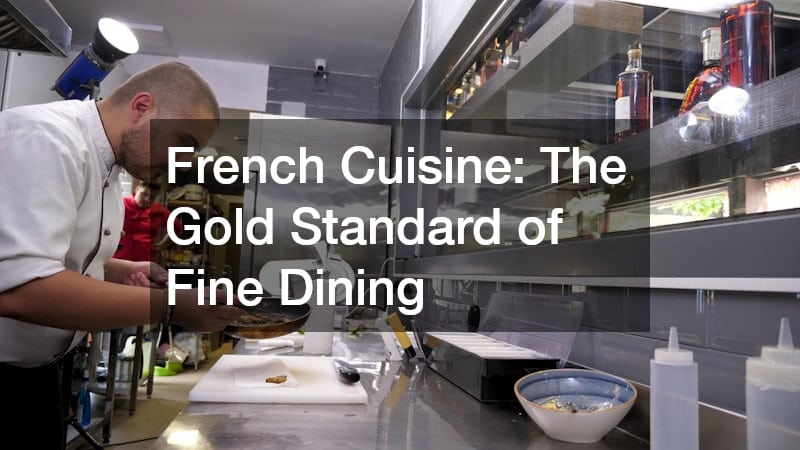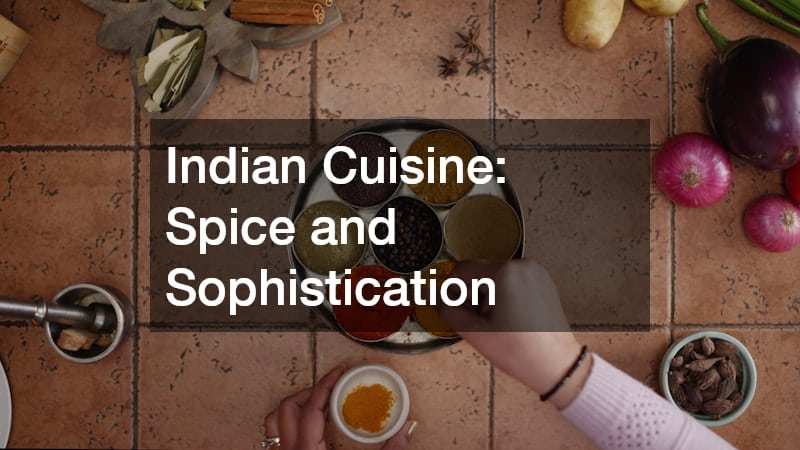Fine dining isn’t just about white tablecloths, candlelight, and waitstaff in tuxedos—it’s a journey of refined tastes, artful presentation, and cultural storytelling through cuisine. For foodies who crave more than just sustenance, fine dining elevates the act of eating into a memorable, multisensory experience. But not all cuisines are created equal when it comes to haute cuisine. Some culinary traditions naturally lend themselves to the intricate, delicate, and often luxurious world of fine dining.
In this article, we explore the top cuisines for fine dining experiences, where quality ingredients, culinary craftsmanship, and innovation come together to impress even the most sophisticated palates.
What Makes a Cuisine Fine Dining-Worthy?
Before diving into specific cuisines, it’s important to understand what characteristics define a fine dining meal. While each culture approaches high-end dining differently, some key elements are almost always present:
- Presentation: Attention to detail, plating artistry, and visual appeal.
- Technique: Skilled use of cooking methods and culinary tools.
- Quality Ingredients: Often seasonal, local, rare, or luxury-grade.
- Storytelling: Dishes that reflect culture, history, or a chef’s philosophy.
- Ambiance and Service: A refined setting with attentive, professional service.
Certain cuisines embody these traits effortlessly, making them go-to choices for gourmet seekers.
French Cuisine: The Gold Standard of Fine Dining

French cuisine is the cornerstone of global fine dining. Rooted in centuries of culinary tradition, France has given the world techniques like sautéing, flambéing, and soufflés—methods still taught in culinary schools around the globe.
Why French Cuisine Stands Out:
- Home of the Michelin Guide, which set the global fine dining standard.
- Signature dishes: Coq au vin, duck confit, foie gras, bouillabaisse.
- Famous for pastries and desserts like crème brûlée, mille-feuille, and macarons.
- A perfect wine pairing tradition that complements every meal course.
Fine dining establishments across the globe mimic French culinary techniques, cementing its role as a leader in the gourmet world.
Japanese Cuisine: Precision Meets Purity
Japanese cuisine is a masterclass in minimalism and technique. While sushi is the most internationally recognized dish, the true breadth of Japanese fine dining—known as kaiseki—is a ceremonial experience.
What Sets Japanese Fine Dining Apart:
- Emphasis on seasonal ingredients and natural flavors.
- Kaiseki offers a multi-course tasting menu designed with visual aesthetics and harmony in mind.
- Dishes include sashimi, grilled fish, seasonal vegetables, and matcha-based desserts.
- Focus on hospitality and presentation, with chefs often preparing food in front of diners.
Japanese fine dining celebrates precision, simplicity, and a deep respect for the ingredients themselves.
Italian Cuisine: Rustic Elegance Refined
Italian food is often seen as casual and comforting, but upscale interpretations prove that it can also be incredibly sophisticated. At the fine dining level, Italian chefs reinterpret rustic dishes with precision and luxury ingredients.
Fine Dining Italian Style:
- Signature dishes include handmade pasta with truffle, osso buco, and seafood risotto.
- Creative use of ingredients like saffron, aged balsamic, and burrata.
- Regional diversity offers endless gourmet possibilities—from Venetian seafood to Tuscan meats.
- Italian wines and aperitivos elevate the full-course experience.
Modern Italian fine dining beautifully marries traditional recipes with contemporary culinary techniques.
Modern Nordic Cuisine: Innovation and Nature
Nordic cuisine—led by countries like Denmark, Sweden, and Norway—has surged in global recognition, especially after restaurants like Noma redefined what fine dining could be.
Characteristics of Nordic Fine Dining:
- Use of hyper-local, foraged, and seasonal ingredients.
- Artistic plating and a minimalist approach.
- Dishes may include smoked fish, fermented vegetables, and wild herbs.
- Emphasis on sustainability and food ethics.
Modern Nordic cuisine is one of the best cuisines in the world for foodies who appreciate innovation rooted in nature.
Indian Cuisine: Spice and Sophistication

Indian cuisine may surprise some when it comes to fine dining, but chefs across the globe are transforming its rich, spice-laden dishes into elegant tasting menus.
Why Indian Cuisine Deserves a Spot:
- Complex spice blends like garam masala, saffron, and cardamom are used creatively.
- Dishes like lamb rogan josh, lobster curry, and tandoori quail are reimagined in gourmet form.
- Presentation often includes gold leaf, edible flowers, and modern plating styles.
- Vegetarian fine dining is particularly strong in the Indian culinary tradition.
Indian fine dining fuses traditional boldness with contemporary elegance, delivering a unique sensory journey.
Which Cuisine Should You Try First?
With so many exceptional culinary traditions, choosing where to begin can be a challenge. Here’s a quick guide for your next gourmet adventure:
- For classical elegance: French
- For visual artistry and serenity: Japanese
- For soulful, regional charm: Italian
- For sustainability and innovation: Nordic
- For flavor complexity and boldness: Indian
Why not turn your next trip or special occasion into a culinary escape? These top cuisines for fine dining experiences guarantee more than just a meal—they offer memories worth savoring.




